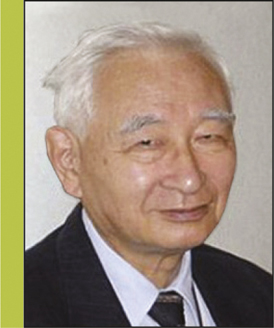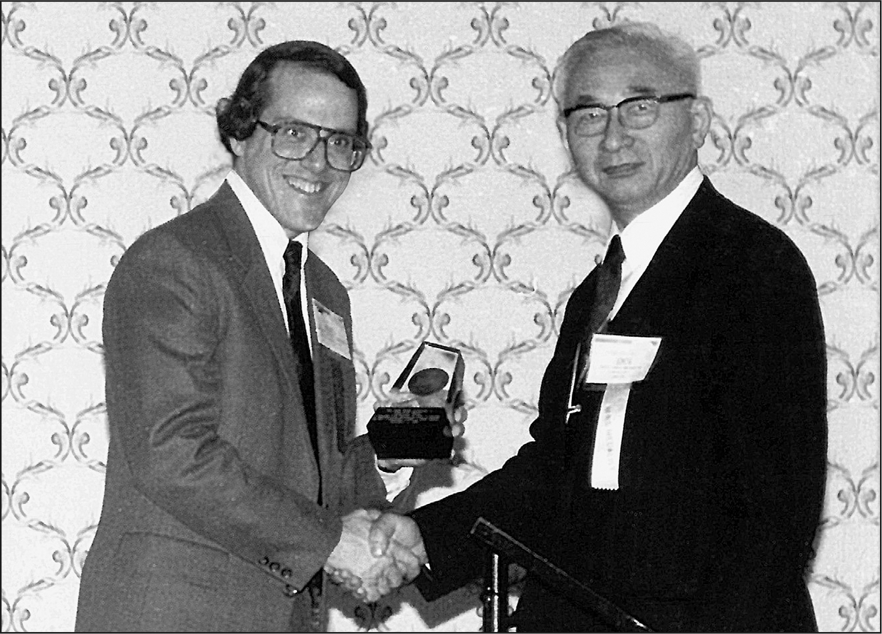Shigeyuki Sômiya, a leading scholar in materials science and engineering, who initiated the studies of hydrothermal reactions for ceramics, has passed away at the age of 90. He was one of the founding leaders of the International Union of Materials Research Societies (IUMRS), established in 1991.

Sômiya graduated from the Tokyo Institute of Technology in the Department of Inorganic Materials (Ceramics) under the supervision of Toshiyoshi Yamanouchi. During his graduate work, Sômiya spent two years as a Fulbright Fellow at The Pennsylvania State University in the Geoscience Department under the supervision of E.F. Osborn and A. Muan. His subject of study was phase equilibria, mostly in Fe2O3-Cr2O3-MgO systems.
After returning to the Tokyo Institute of Technology in 1959, Sômiya joined as a research associate in the Research Laboratory of Engineering Materials with Professors C. Kawashima and S. Saito. Under their guidance, Sômiya completed his PhD thesis. His research interests expanded to other refractories, including Si3N4, ZrO2, ZrSiO4, MgO-B2O3, and high oxygen pressure works in Cr-O2 systems. Sômiya was promoted to assistant/associate professor in 1969. He started his study of hydrothermal reactions around that time. His hydrothermal reaction efforts developed extensively, and he was promoted to full professor in 1974.
Sômiya embarked on a series of collaborative research and exchange visits with many countries, beginning with the United States–Japan Workshop in Ceramics in 1969. After establishing the Laboratory for Hydrothermal Synthesis in 1976, he also pursued joint work with colleagues in Europe, which brought many international materials gatherings to Japan.

Shigeyuki Sômiya (right) receives the MRS Medal from MRS President James B. Roberto at the 1991 Materials Research Society Fall Meeting in Boston, Mass.
During the 1980s, hydrothermal ceramics were further developed leading to synthesis and sintering of oxide and nonoxide nanoparticles, degradation/corrosion of ceramics, and phase equilibria, including metastable phases, under hydrothermal conditions.
In recognition of his collaborative efforts across many continents, his high-quality and well-recognized work, and his impact on technology, IUMRS created the Sômiya Award. Throughout his career, Sômiya organized 20 international meetings related to ceramics and hydrothermals. He received the Iron Cross Award of Germany, Medal with Purple Ribbon from Japan, Distinguished Life Membership from The American Ceramic Society, the Japan National Academy Award, MRS Fellow in 2011, and the MRS Medal in 1991. Sômiya’s collaborative publications included close to 300 articles, several other reviews and papers, and 100 books.
A laboratory on the Yokohama University Campus in Japan, named “Research Laboratory for New Ceramics Materials,” was established in 1984 under Sômiya’s direction. After his retirement from the Tokyo Institute of Technology (as Professor Emeritus) in March 1988, he moved to Teikyo University of Science and Technology, where he became the Dean in 1996 and retired in 1999 as Professor Emeritus.
Sômiya was born into a scholarly family. His father was a professor of analytical chemistry at The University of Tokyo and a member of the National Academy of Japan. His father-in-law, Uichi Hashimoto, was a famous metallurgist and founding director of the National Institute of Metals (now the National Institute of Materials Science of Japan). Sômiya had many networks in the community and throughout the world.


